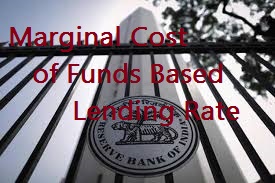Last year, RBI has directed banks to calculate their respective base rate based on marginal cost of lending funds which was previously calculated on other factors as per bank ease.
Firstly what is base rate?
Base rate is the rate which is decided by respective banks below which they cannot lend credits to individuals or businesses except in the cases allowed by RBI. It is different for each bank. RBI does not decide the base rate for banks, but banks themselves decide the base rate following a certain methodology.
Before 2010, there was Benchmark Prime Lending Rate (BPLR) system. Under this banks were allowed to lend loans to their most trust worthy customers at a low rate. But this system was not transparent. Banks used to lend to big businesses in order to increase their business and the low income people could not have the credits easily.
So in 2010, banks were advised by RBI to apply the system of base rate i.e. below this rate banks will not be able to lend credits, except in the cases allowed by RBI. Banks were provided with various parameters to calculate their respective base rates. These parameters include average cost of funds, marginal cost of funds or any other methodology which seemed reasonable.
This was a good step by RBI which allowed transparency in the loan credit system. But then banks used to change their methodology as when they wanted and which provided them with more ease and convenience.
Whenever the RBI cuts the repo rate, same has to be done by banks also in their base rates, but they lower the base rate in small because most banks currently follow average cost of funds based calculation for arriving at respective base rates. This is the main reason for changing the policy to Marginal Cost of Funds based Lending Rates (MCLR).
Now again changing the policy, RBI had directed banks to change their methodology to Marginal cost of Funds to calculate the base rate.
What is marginal cost of funds?
They are the funds which banks have to give to its customers and RBI instead of investing them in other ways.
The main components of MCLR are:
- Marginal Cost of Funds: Customers deposit money in savings account, fixed deposits, recurring deposits and foreign currency accounts and banks have to give interest on these amounts. Interest given on short term borrowings from RBI in the form of repo rate
- Negative carry on account of CRR: Banks have to keep a part of their deposits with RBI which is known as Cash Reserve Ratio (CRR). RBI does not give any interest for these deposits, banks can use these funds to provide loans and earn interests.
- Operating Costs: Operating costs associated with ATMs, providing loans, infrastructure, raising funds, etc.
- Tenor premium: The loans which are given for longer terms or have longer tenor period. MCLR would be based on these longs terms rate also.
These 4 parameters decide the funds which could have have been invested by banks other than giving to the customers and RBI. In new system also, like base rate, banks can not lend below a certain benchmark.
Some of the guidelines on MCLR
- Loans covered by government schemes, where banks have to charge interest rates as per the scheme are exempted from being linked to MCLR.
- Like base rate, banks are not allowed to lend below MCLR, except for few categories like loans against deposits, loans to bank’s own employees.
- Fixed Rate home loans, personal loans, auto loans etc., will not be linked to MCLR.
- The MCLR became effective on April 2016 replacing the base rate system of 2010.
- Existing customers will also have an option to shift to the new regime with some conditions.
- Banks have to review and publish their MCLR of different maturities every month on a pre-announced date.
- The new measures will add further transparency in the methodology followed by banks for determining interest rates on advances.
Base rate vs MCLR:
| Base rate | MCLR |
| Calculation is based on cost of funds, minimum rate of return, i.e margin or profit, operating expenses and cost of maintaining cash reserve ratio | Calculation is based on marginal cost of funds, tenor premium, operating expenses and cost of maintaining cash reserve ratio. |





